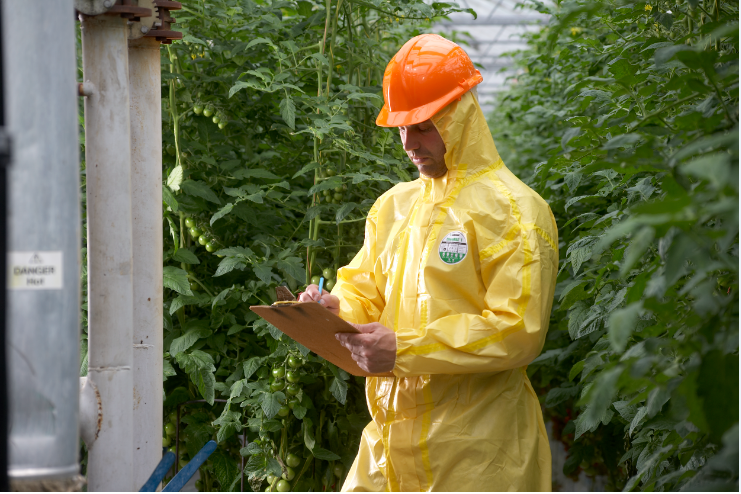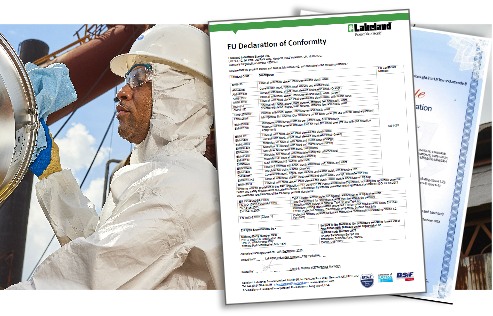When we think about the quality of a product, we immediately associate it with cost. The higher the quality, the more it costs.
But it’s important to note that price is not always a true indicator of how effective an item of PPE is. There is, of course, an expectation that higher priced suits will use better materials and are of better quality – but they may not meet your protective requirements or be comfortable to wear.
Likewise, cheaper items of PPE are expected to be of lower quality – but until they are closely examined and tested, safety managers and workers will not be able to make an informed purchase.
As a result, it makes no sense to choose PPE solely on the basis of price. And, in fact, it’s here where understanding the standards (and the hazards present in your work environment) is crucial.
In reality, the order of priority must always be:
- The suit’s protective capability based on application and chemical hazard
- Level of comfort (if possible, allow workers to test the PPE)
- Price
In this blog, we’ll explain why the initial cost of PPE should not be your main consideration and provide a series of steps for safety managers to make the right decision.
Start by understanding the hazard
In a petrochemical environment, there’s likely to be different chemicals in use simultaneously. This, combined with the different tasks workers perform and the nature of some chemicals, can make it difficult to select the right PPE.
First and foremost, safety managers need to understand the chemicals themselves. The best way to do so is to read the data sheet that accompanies the chemical. It will advise on the nature of the chemical, the health problems it can cause, how to protect against it and what to do if someone is exposed to it.
Then, having assessed the chemical(s) in the environment, the next step is to work out what level of protection is required and how tasks are performed.
In many cases, it may be that safety managers have to acquire PPE that offers different levels and/or types of protection. However, without careful consideration of how these items work together, the effectiveness of the ensemble overall may be hampered or even compromised. To ensure both maximum effectiveness and that performance of individual PPE items has not been adversely affected, individual items of PPE should be tested together. Safety managers can also buy ‘special’ PPE – that is PPE designed to provide additional protection in certain areas, i.e. elbows, knees if a worker is at risk of suit abrasion from working on their hands and knees.
Deciphering the standards
When it comes to selecting chemical protective wear, many businesses rely solely on the CE marking, which only provides an indication of a suit’s ability to meet minimum performance requirements for specific protection types in general terms. The standards to which items of PPE are certified cover a wide spectrum of hazards and the standards themselves are often developed in response to accidents.
What this means in practice is that while the items themselves are “certified” they may not necessarily be suitable (or the best option) for a particular task.
Click here to find out about the different types of CE standards.
To add further complexity, the standards themselves have multiple levels of compliance. For example, in the case of chemical protective clothing, there are a range of classes assessing physical properties of the fabric and tests on the whole garment to define a specific type of liquid spray hazard. Similarly, in the case of FR clothing certified to EN 11612, there are several tests to define suitability for resistance to different types of heat energy:
- Radiant heat
- Contact heat
- Convective heat
- Molten splashes of aluminum
- Molten splashes of iron
Each of these tests defines a range of performance classes (from the lowest Class 1 to the highest Class 3 – or in one case Classes 1 to 4). So there’s evidently a lot to take into account before selecting an item of PPE. For instance, an application might require a worker to have high protection against radiant and contact heat (Class 3) but if the appropriate analysis beyond the simple question “is it certified?” is not undertaken, the item chosen might only provide Class 1 or, given that only one of these heat resistance tests is required by the standard (the manufacturer selects which to use), it might not be classified according to the required heat energy types at all!
Also, there are cases where manufacturers use “short-cuts” to achieve a certain level of protection, rather than building it in to the design of a garment. A good example of this is manufacturers using tape to cover the zip flap of a chemical suit during Type 3 testing. Passing a Type 3 test requires a front fastening design that provides a seal – otherwise it simply will not pass the Type 3 test – and this can cost more. To solve this, some manufacturers have simply applied additional tape only during the test to provide the seal, then adding a small note to that effect in the user instructions. Unless a user notices this and applies that additional tape in the real world, the suit does not offer Type 3 protection.
It makes sense therefore, to check exactly what the standard means. What is in the detail of the standard and its testing? How does it compare it against a specific item of PPE? What are the requirements of the particular application it is to be used for?
How to evaluate items of PPE
Comfort and protection are both incredibly important, but often a compromise has to be made. Some PPE – such as chemical suits, are unavoidably uncomfortable, so it’s about minimizing discomfort rather than finding comfortable PPE (i.e. choosing more breathable or flexible PPE). The best way to find an appropriate solution is to involve the workers in the process to ensure it meets their requirements!
It is a fundamental part of supplying most PPE that samples are provided to allow users to try the product before final selection is made. However, a further option is to involve manufacturers in training and study sessions for those involved in selecting and using PPE to bring about a higher level of knowledge and understanding of the product and its use.
Unseen costs
As well as the initial costs of PPE, lower cost PPE may have “unseen costs,” while more expensive, high-quality PPE hide “unseen benefit,” for example:
- A cheap disposable coverall is not always cheap. With weak fabric, the garment will fall apart quickly and have to be replaced more frequently.
- A cheap coverall that apparently meets a standard might not be doing an effective job. Remember, standards define minimum performance requirements so it might not be providing the protection you need for a specific task. A good example of this are FR SMS garments which meet the standard but perform poorly.
- Cheap coveralls are often poorly made and use cheaper and simpler designs. These are often less comfortable, less durable and may restrict movement. A more expensive, better designed coverall will be more comfortable and flexible – having the “unseen” benefits of happier workers, resulting in better productivity.
- The ultimate “unseen costs” can be the consequences of low cost PPE not protecting workers properly. CE certified PPE is, by definition, designed to protect against hazards that may be life threatening or cause irreversible damage to health. The consequences of things going wrong can be dramatic. This is not only limited to the financial costs of legal proceedings and compensation, but with the possibility of legal redress taken directly against management, directors and owners with the possibility of jail sentences. For this reason, it is also vital that users of PPE ensure their supplier or manufacturer has suitable product liability insurance in place. This is rarely the case with very cheap PPE.
Ultimately, the initial cost of PPE should not be the main consideration. Opting for higher quality PPE (which may well be more expensive) can be cheaper in the long term but also more beneficial to the workforce. Always consider the initial cost of PPE, certainly – but it should always be the least important variable!





